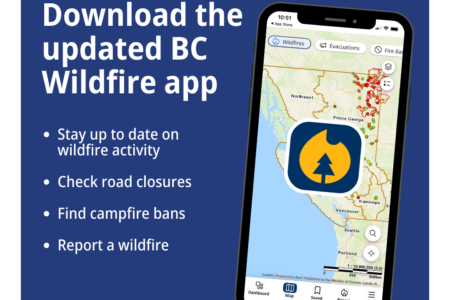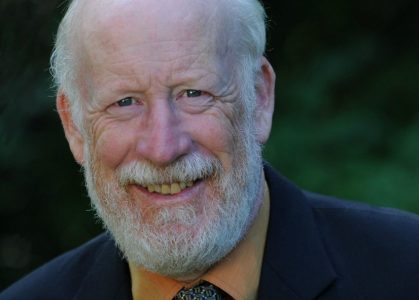The City of Castlegar answers frequently asked questions concerning 2019 budget
In the fall of 2018, City staff presented asset management plans for the City’s water system, sanitary system, storm system and roads network. The water and sanitary infrastructure are self-funded through utility rates and have no impact on general taxation (i.e. property tax). The storm infrastructure needs are funded through the parcel tax. The road network, city facilities, parks and fleet are maintained and replaced with general taxation and other sources of income like grants. The roads report showed an annual investment of $675,000 is required to maintain and replace the City’s roads long-term. Ongoing cost for the renewal of the city’s facilities is estimated to be $100,000 annually, the City’s fleet $400,000 annually and City Parks $75,000 annually. In total, the City will need $1,250,000 annually to begin to replace these assets. To address this funding shortfall, the City is proposing to create an Infrastructure Investment Levy.
1. Q. What is the Infrastructure Investment Levy?
A. Infrastructure Investment Levy (IIL) is the amount needed to fund the replacement of city owned roads, facilities, parks and fleet. It is targeted to meet the City’s infrastructure deficit and address full life cycle costs of those assets listed above. In total, the taxation stream that will fund the replacement of municipal infrastructure is estimated to be $1,250,000 annually. However, it is proposed that this investment level be phased in over a number of years. Once the full measure of this investment is in place, all city roads, facilities, parks and fleet assets will be planned for and financially covered for replacement. This investment will provide a legacy for the community by ensuring that we fully fund repair and replacement of what we build. Long term this will translate to better quality of life, more investment interest, and total taxes and charges that are still very competitive in the West Kootenays.
2. Q. Can’t our current taxes pay for the replacement of infrastructure?
A. Each year the City collects taxes and fees as its main revenue source for the general fund. Once the operational costs are removed, the amount left over is available to fund the construction of new assets and the replacement of old ones. Over a period of years that amount left over for capital projects has been reduced to an amount that cannot fund the construction of new assets nor the replacement of old expired ones. The use of reserves can buffer those needs but it is not sustainable. To address the funding shortfall, it is proposed in the 2019- 2023 Budget that the operational costs, any new costs and the infrastructure renewal costs (IIL) be shown and funded separately. This will mean that the public can clearly see what any tax adjustments are being used for.
3. Q. The need to replace infrastructure has been created over decades, why are we fixing it over five years?
A. The City is not proposing to fix or replace all our infrastructure over five years, but instead establish a funding level that will allow us to fund infrastructure replacement over the long term. It will take decades to replace all that we own, and only when it has reached its full lifespan.
4. Q. Can’t we spread out the phase in period of the funding of the IIL?
A. Council reviewed and debated a five-, seven-, and 10-year phase in period. Currently Council has requested that the budget be drafted with a five-year phase in period. That phase in length can still be reviewed through the 2019 budgeting process, and can be reviewed in each annual budgeting cycle should something significant change within the City’s financial plan. Phased in over five years, the tax adjustment needed to fund the IIL is an average of 3.25 per cent for five years, if phased in over seven years, the average is 2.29 per cent and if phased over 10 years the annual increase is 1.68 per cent. A one-per-cent increase in the Infrastructure Investment Levy equates to approximately $10.50 per year difference for the average house. There are benefits and risks related to each length of the phase in period. A more in-depth review of those benefits and risks can be founds here on page 19 of the document below. https://www.castlegar.ca/assets/Uploads/Budget-Capital-Overview2.pdf
5. Q. Will the Infrastructure Investment Levy just create a big reserve?
A. The Infrastructure Investment Levy, will fund an infrastructure replacement reserve, but the reserve is only used as a balancing account. The IIL will raise funds that will immediately be put to use to replace our roads, parks, facilities and vehicles that have met the end of their lifespan. For example, the 2019 Draft Budget includes the following projects that would be funded by the IIL. – Design of Columbia Avenue Phase 2 project – Replacement of the asphalt for the 2nd Street and 5th Avenue utility project – New loader and pickup truck – Air handling improvements to the Public Work’s mechanical shop Additionally, the creation of the IIL reserve means if money can be saved in a project, it remains in the reserve so it can be used for other infrastructure replacement projects. In addition, some years will have smaller capital projects, and other years will have larger capital projects, the reserve will act as a balancing account so that taxation amounts don’t fluctuate year to year with projects.
6. Q. I’m a senior, how will I benefit from the IIL and all this spending on infrastructure?
A. It is important to note that the IIL is not going to be used to build new capital projects, it only funds the replacement of the infrastructure built in some cases 50 to 60 years ago. All that infrastructure built post WW II is reaching its life span, and not enough money has been set aside to replace it, not just in Castlegar but in almost all communities. We cannot go back and change finances of the past but we can plan for the future. The need to replace the infrastructure is not in question, it will need to happen, and we will need to have the funding to replace it. What the IIL is proposing to do is create a funding stream that will allow the City to slowly and deliberately replace infrastructure without any tax rate surprises or “crisis” that may arise in future years if we don’t take care of things more aggressively now.
7. Q. Don’t we have existing reserves that can fund this type of work?
A. Yes, the City maintains reserves, some are discretionary, and some are required by provincial legislation. The City has been carefully balancing the use of reserves when needed to help fund the annual capital construction program. However, with the growth of the City and need to begin putting more resources into the replacement of our infrastructure (based on studies of state of repair of our infrastructure) the existing reserves are under pressure and can’t fully support all of the needs of the community moving forward.
8. Q. Can’t we get grants to replace our infrastructure?
A. In some cases yes, the City has and will continue to pursue all grant opportunities that fit our needs. Columbia Avenue Phase 1 is a prime example with approximately 5 0per cent of that project being funded by grants. However, grant authorities have been signaling to municipalities for a number of years that the straight forward replacement of existing infrastructure will not receive grant funding. Instead they encourage and now require municipalities to plan and eventually fund asset management plans to be eligible for any future grant funds. These asset management plans clearly show the asset or infrastructure’s lifespan and establish an amount that the City should be setting aside for its replacement. That is what the City is proposing to do with the establishment of the Infrastructure Investment Levy for roads, parks, fleet and facilities and has already completed these plans for the water, sewer and storm utilities.
9. Q. Can’t we borrow the money for these projects?
A. Yes, borrowing is an important tool that communities can use. Borrowing typically takes place for large new infrastructure projects or large purchases – like Columbia Avenue Phase 1 or the new ladder fire truck. The benefit is longlasting and has positive benefit to almost everyone. With good interest rates, it can make good sense to spread that cost out over time – like a mortgage. The IIL isn’t about new infrastructure; it’s about replacing infrastructure we already have once it reaches the end of its lifespan. Think of borrowing (new) and the IIL (old) like two ends of a see-saw. They work together to provide financial balance. It must also be noted that borrowing also does charge an interest rate. The IIL does not – it’s our money. So we are further ahead over time by self-funding as much as we can. For example, $1 million dollars borrowed over 25 years, will cost the City an additional $536,000 in interest.


























Comments